Comments
- No comments found

Deep learning is changing the world during the Covid-19 pandemic by detecting fraud, treating illnesses, developing self-driving cars and helping organizations deal with complicated queries.
Today's boon in artificial intelligence is centered around a technique called deep learning, which is powered by artificial neural networks.
The existential threat of Covid-19 has highlighted an acute need to develop working therapeutics against emerging health concerns. One of the luxuries deep learning has afforded us is the ability to modify the landscape as it unfolds — so long as we can keep up with the viral threat, and access the right data.
Typically, data scientists use deep learning to pick out drug combinations with large existing datasets for things like cancer and cardiovascular disease, but, understandably, they can’t be used for new illnesses with limited data.
According to MIT, two new drug combinations were found using this approach: remdesivir (currently approved by the FDA to treat Covid-19) and reserpine, as well as remdesivir and IQ-1S, which, in biological assays, proved powerful against the virus. The study has been published in the Proceedings of the National Academy of Sciences.
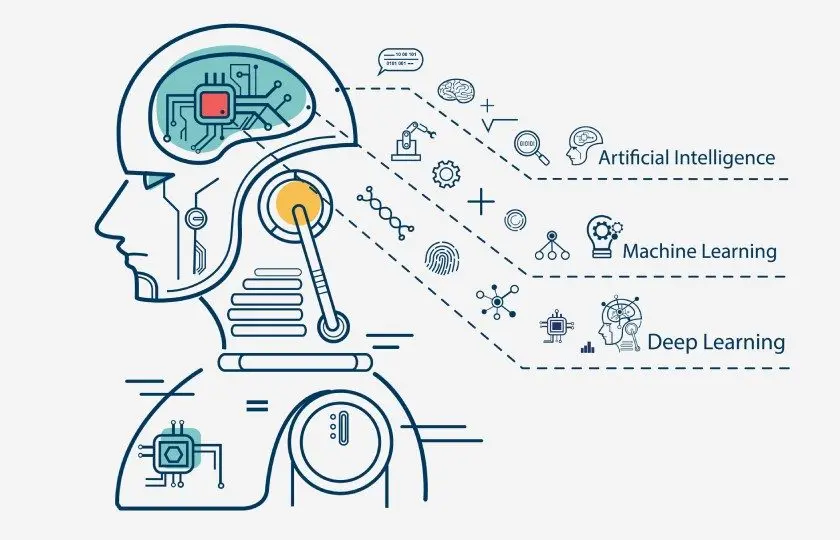
Source: NovelVista
Deep Learning is a subfield of machine learning concerned with algorithms inspired by the structure and function of the brain called artificial neural networks.
According to IBM, deep learning attempts to mimic the human brain—albeit far from matching its ability—enabling systems to cluster data and make predictions with incredible accuracy.
Deep learning drives many artificial intelligence (AI) applications and services that improve automation, performing analytical and physical tasks without human intervention. Deep learning technology lies behind everyday products and services (such as digital assistants, voice-enabled TV remotes, and credit card fraud detection) as well as emerging technologies (such as self-driving cars).
Deep learning neural networks, or artificial neural networks, attempts to mimic the human brain through a combination of data inputs, weights, and bias. These elements work together to accurately recognize, classify, and describe objects within the data.
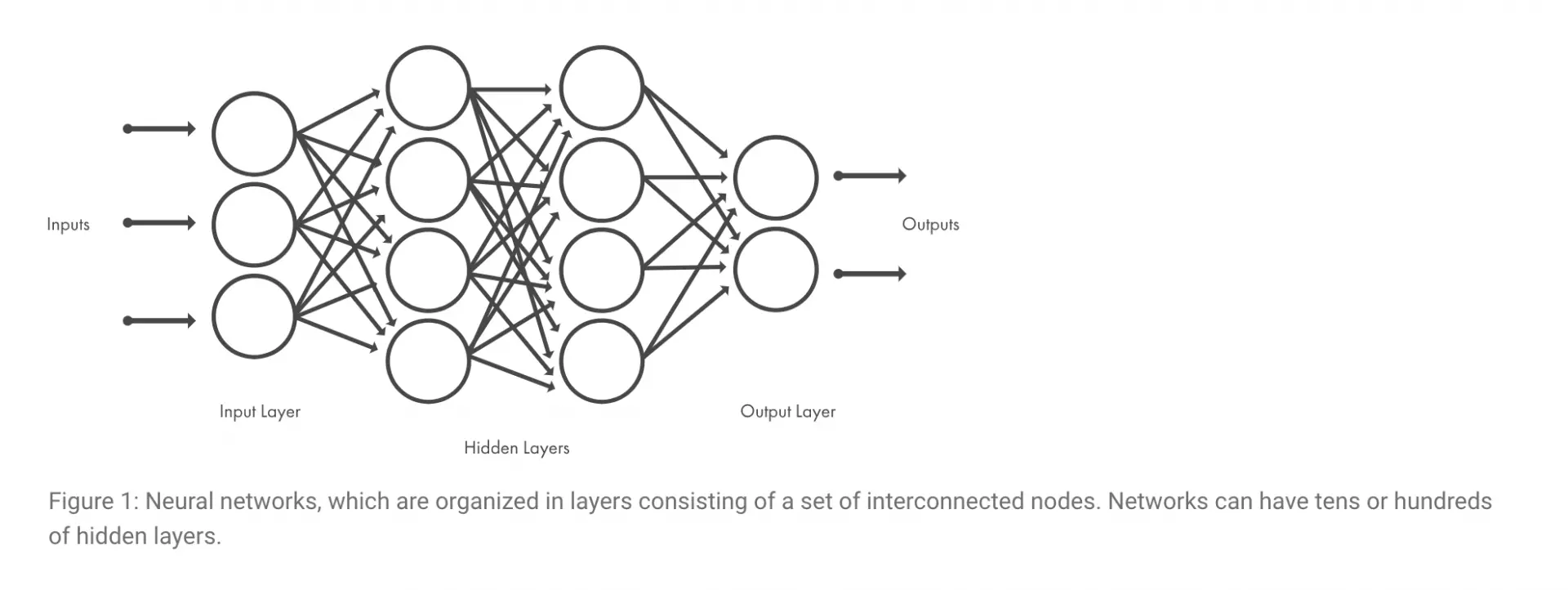
Source: Mathworks
Deep neural networks consist of multiple layers of interconnected nodes, each building upon the previous layer to refine and optimize the prediction or categorization. This progression of computations through the network is called forward propagation. The input and output layers of a deep neural network are called visible layers. The input layer is where the deep learning model ingests the data for processing, and the output layer is where the final prediction or classification is made.
Another process called backpropagation uses algorithms, like gradient descent, to calculate errors in predictions and then adjusts the weights and biases of the function by moving backwards through the layers in an effort to train the model. Together, forward propagation and backpropagation allow a neural network to make predictions and correct for any errors accordingly. Over time, the algorithm becomes gradually more accurate.
The above describes the simplest type of deep neural network in the simplest terms. However, deep learning algorithms are incredibly complex, and there are different types of neural networks to address specific problems or datasets. For example,
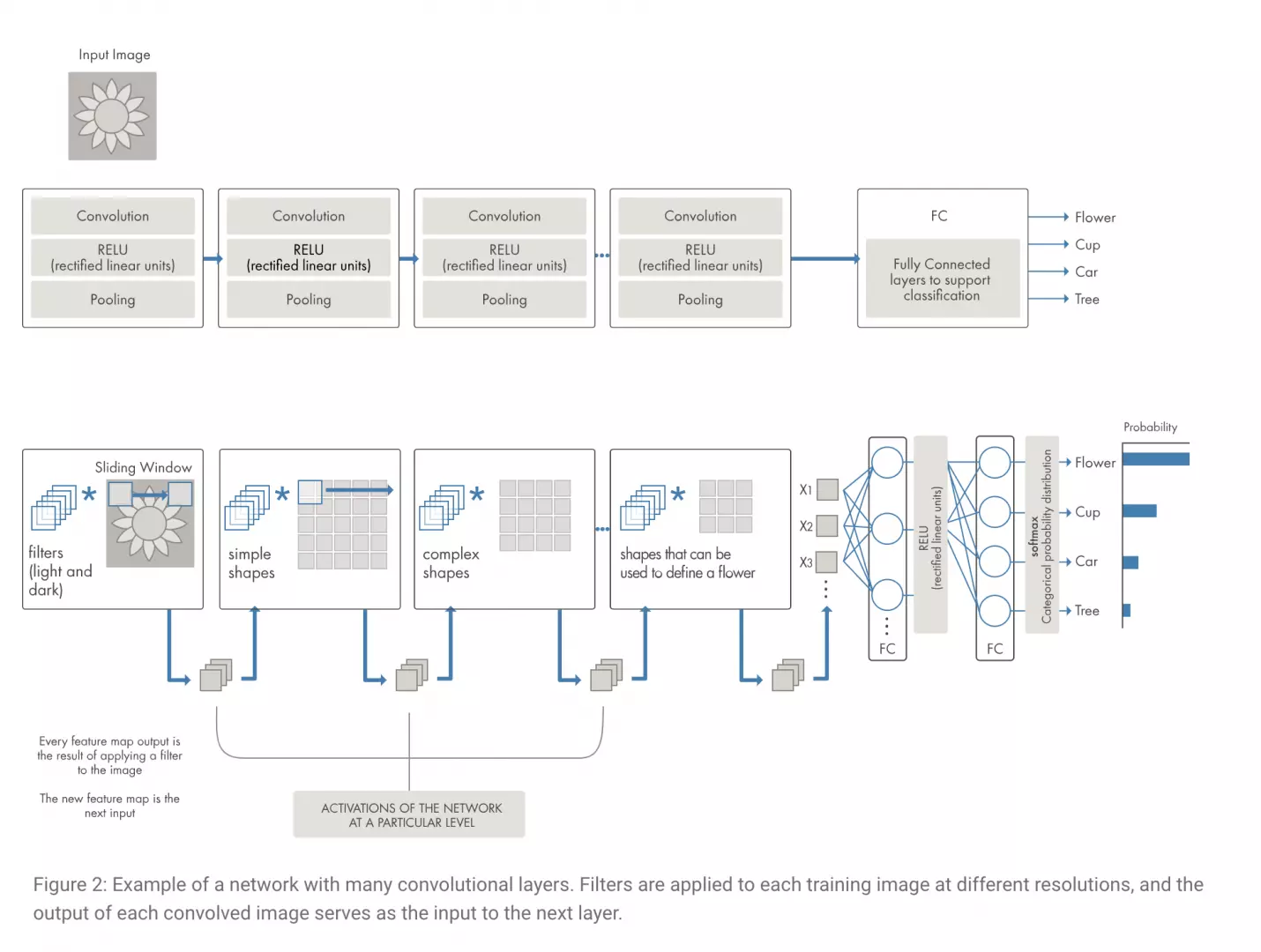
Source: Mathworks
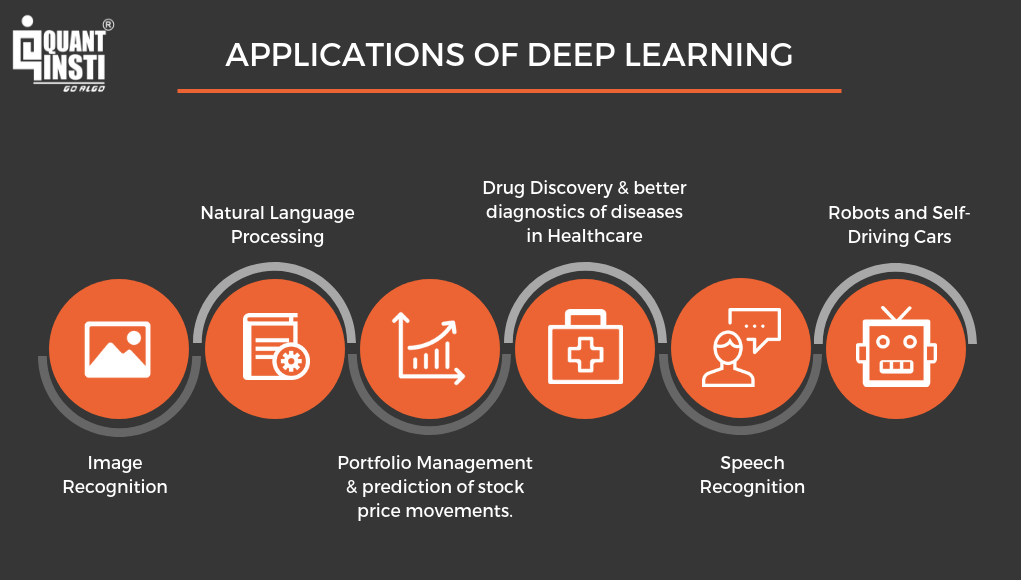
Source: QuantInsti
Real-world deep learning applications are a part of our daily lives, but in most cases, they are so well-integrated into products and services that users are unaware of the complex data processing that is taking place in the background. Some of these examples include the following:
Financial institutions regularly use predictive analytics to drive algorithmic trading of stocks, assess business risks for loan approvals, detect fraud, and help manage credit and investment portfolios for clients.
The healthcare industry has benefited greatly from deep learning capabilities ever since the digitization of hospital records and images. Image recognition applications can support medical imaging specialists and radiologists, helping them analyze and assess more images in less time.
Many organizations incorporate deep learning technology into their customer service processes. Chatbots—used in a variety of applications, services, and customer service portals—are a straightforward form of AI. Traditional chatbots use natural language and even visual recognition, commonly found in call center-like menus. However, more sophisticated chatbot solutions attempt to determine, through learning, if there are multiple responses to ambiguous questions. Based on the responses it receives, the chatbot then tries to answer these questions directly or route the conversation to a human user.
Virtual assistants like Apple's Siri, Amazon Alexa, or Google Assistant extends the idea of a chatbot by enabling speech recognition functionality. This creates a new method to engage users in a personalized way.
Deep learning algorithms can analyze and learn from transactional data to identify dangerous patterns that indicate possible fraudulent or criminal activity. Speech recognition, computer vision, and other deep learning applications can improve the efficiency and effectiveness of investigative analysis by extracting patterns and evidence from sound and video recordings, images, and documents, which helps law enforcement analyze large amounts of data more quickly and accurately.
Deep Learning lacks common sense. This makes the systems fragile and when errors are made, the errors can be very large. These are part of concerns and thus, there is a growing feeling in the field that deep learning's shortcomings require some fundamentally new ideas.
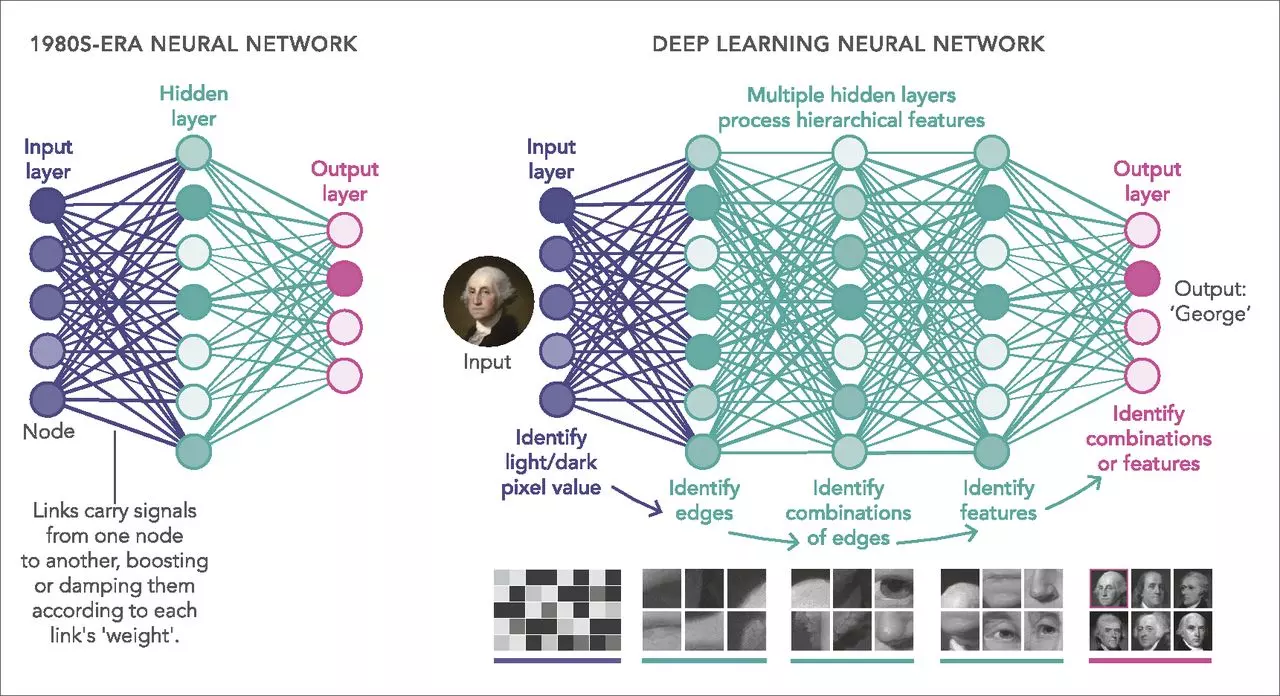
Scaling up current deep learning techniques by stacking more layers and using more training data can only superficially palliate some of these issues. It will not solve the more fundamental problem that deep learning models are very limited in what they can represent, and that most of the programs that one may wish to learn cannot be expressed as a continuous geometric morphing of a data manifold.
Deep learning goes a step beyond machine learning and is expected to play a major role in the technology of the near future. Customer service is not the only field being revolutionized by deep learning applications. Much of the technology behind self-driving cars depends upon deep learning applications. Other examples of deep learning include using AI to better detect and treat illnesses, voice-activated assistants, automatic text generation, automatic handwriting generation, image recognition, advertising, earthquake predictions and market forecasting. Most of these technologies are still being developed and refined, but it is reasonable to expect that many will advance to the point where they become a common part of daily life.
Leave your comments
Post comment as a guest